Lyme disease: Symptoms and treatment
On this page
- Symptoms of Lyme disease
- If you become ill
- Diagnosing Lyme disease
- Treating Lyme disease
- Provincial and territorial public health authorities
Symptoms of Lyme disease
Signs and symptoms of Lyme disease can vary from person to person after being bitten by an infected blacklegged tick (deer tick) or western blacklegged tick.
Lyme disease occurs in stages. The signs and symptoms of each stage can overlap. In some people, Lyme disease may present in a later stage without a history of prior signs or symptoms.
Early signs
Early signs and symptoms of Lyme disease may include:
- rash*
- fever
- chills
- fatigue
- headache
- swollen lymph nodes
- muscle and joint aches
*This rash is called an erythema migrans rash. It's the most commonly reported sign of Lyme disease. It's an expanding skin rash that typically begins at the site of the tick bite. It slowly grows to more than 5 cm in diameter over several days, and can sometimes:
- be circular or oval-shaped
- look like a target or bull's eye
- go unnoticed, especially if it's on:
- dark skin
- a part of the body that's difficult to see
Some people may not develop a rash.
Images of erythema migrans rash
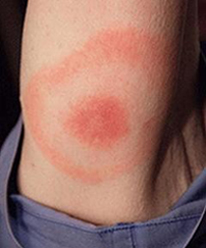
Image 1Footnote a: A rash that looks like a bull's eye at the site of a tick bite.
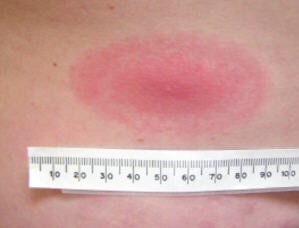
Image 2Footnote a: An oval-shaped red rash.
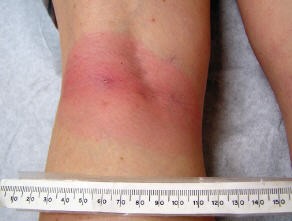
Image 3Footnote a: A red rash that has expanded across the width of a limb.
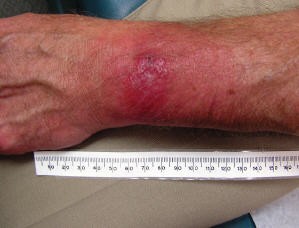
Image 4Footnote a: A red rash and blisters on a forearm.
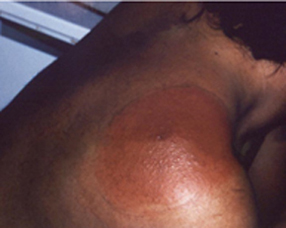
Image 5Footnote b: A rash on a shoulder.
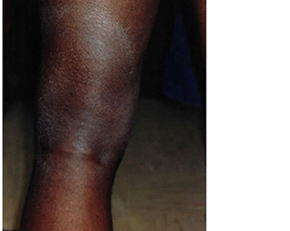
Image 6Footnote c: A rash on the back of a knee.
Later signs
Later symptoms of Lyme disease can appear days to months after an infected tick bite, and may include:
- more rashes
- dizziness
- severe headaches
- migratory pain that spreads in the:
- joints
- bones
- tendons
- muscles
- arthritis in the:
- knees
- ankles
- elbows
- wrists
- thinking and reasoning symptoms, such as:
- memory loss
- inability to think clearly
Other later stage symptoms include:
- nerve pain, weakness, tingling or loss of sensation in limbs
- drooping of one or both sides of the face (facial paralysis or Bell's palsy)
- heart palpitations and an abnormal heartbeat
- swelling of the brain and spinal cord
- eye problems, such as conjunctivitis (pink-eye)
In very rare cases, death could occur due to the complications involving an infection of the heart.
If you become ill
Early diagnosis and treatment of Lyme disease can prevent complications. See your health care provider right away if you've been:
- bitten by a tick and develop symptoms of Lyme disease
- to an area where blacklegged ticks or western blacklegged ticks may be found and develop symptoms of Lyme disease
Tell your health care provider:
- where on your body the tick was attached
- how long you think the tick was attached to you
- where you were (area, city, province and country) when you were bitten by the tick or may have been exposed to ticks
Learn more about:
Diagnosing Lyme disease
Diagnosing Lyme disease can be challenging as symptoms vary from person to person.
Symptoms of Lyme disease can be similar to other illnesses. A diagnosis of Lyme disease is based on:
- signs and symptoms
- exposure to blacklegged ticks or western blacklegged ticks
- travel or exposure to an area where blacklegged ticks or western blacklegged ticks may be found
- blood tests, when appropriate
Your health care provider will assess if you need a blood test. You usually won't need a blood test if you:
- have the characteristic expanding rash and
- were exposed to blacklegged ticks or western blacklegged ticks
Only get tested by a licensed public health laboratory. Testing by private, non-licensed laboratories may not be reliable.
Treating Lyme disease
Lyme disease is treated with antibiotics. The earlier you receive treatment for Lyme disease, the greater the chance of a successful recovery.
Some people who are treated for Lyme disease may continue to have symptoms after treatment. The cause of these symptoms isn't currently clear, but continued antibiotic treatment:
- may produce unwanted side effects
- hasn't been shown to improve symptoms or outcomes
Provincial and territorial public health authorities
For local information on Lyme disease, consult your provincial or territorial public health authority:
Page details
- Date modified: